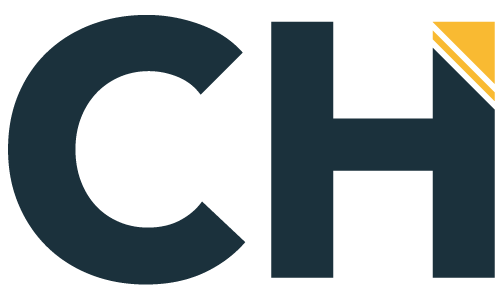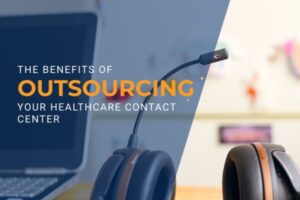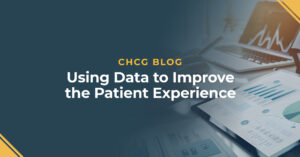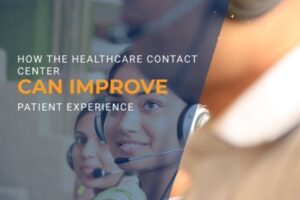Do you have an accurate understanding of where your business is at today? Are you due for an assessment of your operations and technology? Do you have clearly defined goals for a desired future state? Do you have a strategy and detailed plan in place to meet or exceed your business goals?
CH Consulting Group’s CEO/Founder, Christa Heibel, talks about how you can set your organization up for success through our comprehensive 360 View Assessment that is used to develop an effective strategy and roadmap to bridge the gap between current state and your desired future state. Don’t waste another minute, dollar, or resource in working towards your business goals and improving your overall customer experience! Check out this video to see the who, what, how, why and when as it relates to optimizing your customer experience, operations, and technology with the CHCG team and our wildly successful and popular 360 View Assessment.
Welcome. Thank you for joining us on this great discussion about strategy and the roadmap to success in 2021 with Christa. So Christa has really dominated the contact center industry for the past several years, known specifically as an influencer and C suite business growth and strategy expert. She has worked in all kinds of call center industries. She has worked in the call center industry since 1982, serving in nearly every position from telemarketer to CEO Christa’s breadth of knowledge and experience includes contact center services, customer experience, integrated sales, business development, technology, infrastructure and automation. Christa has grown and guided numerous call center operations to success resulting and leading struggling operations back to profit, profitability, or driving successful growth strategy initiatives for investment operations. She has launched over 15 successful new operations, ranging in first year annual revenues of 3 million to 25 million and worked across multiple sectors, including finance, business, insurance, ecommerce, retail, and healthcare. Welcome, Christa.
Thank you, Nikki, that was a mouthful. I am very excited to be here today and to talk about assessment and strategy. So often, when people ask me what it is that my team and I do for our clients, somewhere in that response, we end up talking about the 360 degree assessment. And our most popular scope of work that we would participate with a new client on is going to be the 360 degree assessment and roadmap. And so I want to talk about what that is this morning, from the standpoint of maybe providing some insight to those of you that are interested in doing an assessment of some chart, or your organization in its entirety.
So I want to kind of talk about the what, why, when and how of doing an assessment and strategy project, whether it’s something that you guys decide to try on your own within your organization, or you’re looking to bring in a third party, maybe it goes to how you actually may want to correspond or evaluate a service coming in to assist you. So when we talk about a 360 degree assessment, the word of what we’re talking about is doing a thorough review of the current state of a business to determine where we are at as an organization today. So the “Was” is an honest review and assessment of where you are, and then laying out for a future state goal, what you need to do to get there. So very simply, what we’re talking about in an assessment and strategy project is honestly identifying today, identifying where you want to be tomorrow. Now the roadmap to get from point A to point B. Why do you do this? That hopefully is somewhat obvious. Because if we don’t have a starting point, an end point, and logically lay that out, we end up Never hitting the future state goal or place or desire, or we end up spending a lot more money and are wasting a lot of time that we don’t need to waste getting there. So the Why of an assessment and a strategy project is to save time and money and headache, and a whole lot of other team in accomplishing what your organization goals are, so that you can actually successfully get to the future state, whether that’s growth, decreased expenses and increased margins, a bigger global footprint, merger acquisition goals, it doesn’t matter, scalability, more automation, it doesn’t matter what the futures, the goal is, the way to get there is to assess where you are today, define where you want to be, and lay out that strategy.
So when you do this, we talk about what we mean by assessment and strategy, why we need to do it, because we’re supposed to be good stewards from a business perspective, and good leaders. And so this is the type of project a team can get behind, give input into the field part of the mission, and the forward thinking of the organization and buy into that strategy roadmap to help you implement it. So when do you do this, you do this anytime you have an opportunity and a challenge to get to a new goal. So this can be a small piece of a business where somebody says, Okay, I’m going to just set up a strategy and roadmap project for a training department. You know, one of the challenges we see in the market today is our clients are needing to get virtual, and they’re needing to review processes and technology to do all of their onboarding and training now in a virtual world. And so that takes an overhaul of a training department. And so that’s the time or example of a time when you sit down and say what do we have? What is our current state around all of our training? What tools, resources, people, technology? And what does it look like today? And then what do we want it to be? What does it need to be in the market today? And from point A to point B, we start to lay out the roadmap, what is that going to take to get us there? So these kinds of 360 degree assessments and roadmaps. Again, like I said in the beginning, whether you’re doing them yourselves internally, or you’re bringing in help, that can be done any time there is a problem to solve a new future state goal to accomplish. And it fosters better communication, and teamwork, it gets more opinions going, and creates a more collaborative environment. And again, it saves time and money.
So going when to do this is anytime you got to redefine your technology, strategy, anytime performance, or past management, or breakdown in any of your cx operational processes, like quality assurance, or training or onboarding, recruiting, or leadership are breaking down, and you need to improve performance management, you need to improve cost management from a p&l or financial perspective, they’re trouble. And you’re growing, you’re experiencing success. And you want to scale smartly. You want to scale wisely. You don’t want to waste time and resources going down the path because you didn’t create a straight line to where you wanted to get. So the last thing is really the house. And again, this is not meant to be a sales pitch. I think that hopefully you can take this even internally small opportunities and cultivate a successful assessment and roadmap project kind of mindset within your organization.
Every time we work with a new client, I have this challenge of trying to explain how even though we have best practices, and we have processes, and we know how to get done a strategy roadmap very efficiently, we are not cookie cutter, we are very customized in a certain level in how we approach every individual client. So it’s a balance between good processes that makes sense to get you through an honest assessment. And to a point where you have a collaborative, valid, adopted roadmap and strategy. And so it’s important that there is some planning and how you’re going to do that. But it’s also important that there’s some flexibility because every company and team is different, right? Every culture is different. And everything within the customer experience side of our business is holistic, everything works together. So it’s hard. And we would argue, impossible to do a thorough and good assessment and roadmap strategy without looking at operation. How do you define the technology requirements of a future speed of your business, if you don’t understand the user requirements, and the business case, requirements of the technology you’re trying to roadmap? And so even in operations, as you look at leadership, or other performance management opportunities, it’s impossible to look at why performance is dropping, without looking at the role of where are we hiring? How are we training them? What does leadership and motivation look like in the culture on the sales floor? So all of these pieces are? Is the technology we’re providing, supporting the agents in their success? Or is it the hurdle to performance.
So it’s just important to acknowledge as you begin the how to do this, as you begin the assessment phase, that you go into this on cyber, it’s not just a key that needs to be at the table talking about the right technology, investments, and strategy. It’s not just one portion of an operations team that is responsible for solving overall cultural issues or opportunities. So make sure that you start with a good, well rounded, right person at the table to help you with the first phase, which is the discovery. Ch Consulting Group never starts a project without phase one of any contract being discovered. What does it mean to do discovery, it means to learn the facts, learn the business, learn the team, learn the truth of the organization, and what is happening. So our discovery is traditionally done in a combination, our remote research, which is a lot of collaboration with our client in sending us documentation and clarity on how things are set up. And then we always have an on site component, which is probably easier to coordinate all of this on an internal project, where you may all be in the same location, or I guess not anymore. So the remote discovery is probably as applicable even to a team in one city today. But the discovery or research phase is critical. No big strategy can be based on an incomplete picture of what you have today. No brilliant strategy and roadmap will be completed, if we aren’t honest about where we’re at, in what we do. And I’m sorry to say more often than not in this process. We’re told one thing by leadership, this is how it gets done. This is how the center managed this. This is how that department dental dentists, and then when we get into our discovery, we learn things are actually not quite as the leadership team may think they’re, and that’s a really important part of this process. Because if you’re not honest, and you don’t get to the truth, and the full picture of exactly what the current state is you Your roadmap, your implementation plan, your strategy is not going to address the right issue, you’re going to be addressing issues that don’t exist, or your solutions aren’t going to work, because there’s underlying other issues that you’re not even dealing with within your roadmap strategy.
So step one, how research and discovery, thorough complete understanding of how is the training department currently working? How is the technology currently set up? And how does the operations team need to work? What is their workforce management currently doing? Exactly what resources do we have exactly? What are the processes in writing? And then what are the processes in application? And that is step one, that is the baseline of research and discovery. We are so super detailed in our discovery, like, super detailed, because we can’t know too much to help our clients make the best decisions. We can’t know too much.
So step two, now I’ve got my honest view of things. I know what is working and what is not, maybe I already knew, and it validated what I thought. Maybe it’s validated that there actually could be a whole different situation going on than I thought, right? The next step is assessment, how assessment is probably a little bit. I think of the edge on this part of this process as a third party, because assessment is where you want to line up the truth of where you are with where you need to be, and the rest of industry in best practices. So they’re very rarely do we need to completely reinvent a wheel, right. And there is always more than one way to do things. And we always tell our clients, we will lay out options with pros and cons, and different financial investment levels of different solutions to get you where you need to go. But at some level, we want to also be able to bring in industry trending and best practices, and unique and exciting ways. We’ve seen other organizations actually like to resolve certain problems, or accomplish certain goals. So the second part, which is the assessment phase, is really about being educated about options on the market, being educated about other technology, or technology solutions and automation that might help you within the goal of whatever your roadmap and strategy is. It’s knowing what the industry best practices are, and how to start to utilize them in a way that will make you more efficient and help you accomplish your goals as quickly as possible. If you’re doing that internally, that means you need to have a well rounded team. It’s hard we see for clients that have high or really low attrition. We work recently with a company that’s got a leadership team that has all been there for 20 to 30 years.
Like in one way that is so awesome. And we applaud that, that teamwork, that culture, but there are serious disadvantages to having an entire leadership team that has never worked outside of that company, by way of helping with this assessment phase. Because this is again about comparison, and best of breed and knowing that you’re doing things that way. So one of the ways that we do our assessment, not always because again, there’s some customization and we collaborate with our clients on what is going to work best for them. But we do tend to use a lot of SWAT format. So taking the information from the discovery phase, and plugging those validated truths, good, bad and ugly, into a SWOT forming strengths, weaknesses, opportunities and threats. We take the validated truth and say these are big things that we’re doing; these are deriving the right culture and the right results. This is what we want to maintain. And then we lay out these are the areas of weakness. These are not giving us a competitive advantage. These are costing us money, areas of opportunity, or where maybe greater technology or a reorganization or realignment process will improve something. And the threats category, unfortunately, is where there is high wit, we’ve seen threats in our SWOT analysis that relate to HR related type issues, data security, and technology. Security is obviously another high risk area there.
And so we’ve laid those a set in the assessment phase, we’ve laid out a SWOT or some other format that allows you to somehow started to work together on communicating the value of what you’re doing and what you want to preserve against what is what we need to address in and implementation plan or strategy roadmap. Clearly, when we use a SWOT format, our roadmap is going to take all of the weaknesses, opportunities and threats and make sure that our roadmap or strategy plan addresses all of those as it moves us forward to the ultimate goal, the endgame, right, that future state that we defined at the beginning of this process.
And so then the last phase is really creating that strategy. Oftentimes, even if we are brought in to help guide and advise and drive this process, we may not be the only third party that is included in the development of that strategy. Sometimes we seek other expertise, particularly as it relates to technology, in validating what maybe isn’t, isn’t available. So on a strategy plan, for example, for an HP strategy, there’s always, you know, options for different directions that you can go with your IT strategy and plan. And so, you know, option one might be optimizing what we have, sometimes play through, like, we’re invested, we just did this, maybe we should have hired you before we just did it, but we didn’t. It’s what we have, give us a strategy to optimize. That’s what we have to work with. And then other times, you know, it’s like, okay, we’re aging out of this, we realize it, like give us our best case scenario of what we should go to. And so you know, there’s some additional research externally that may be done. Bringing in partners is key, right, making sure that you have all of the facts, and just making sure that your roadmap is solid, and your strategy is solid. It’s not based on assumptions. It’s not based on ego, because this is what I believe, or I don’t have time to go ask somebody or I’m biased.
So I wanted this way. Like, we believe strategy should be based on an efficient business case and return on investment. So we’re not wasting time in our strategy, like making recommendations to, you know, that are core to what the company’s future state objectives, culture and goals are. And we back up our strategy with financial analysis. As a matter of fact, our, like, lead project manager is a CFO. So there is no assessment and roadmap 360 project that CH consulting group does, that doesn’t have financial analysis as part of the final strategy. So if we’re recommending you go down a certain path and invest in process improvement and change, resource, reallocation, technology investment, we’re backing that with efficiency, cost savings, or our longer term return on investment data, because it’s business and we get it right. And if we can do things that are just for the culture, and for everybody to feel good, that’s fantastic, too. We care about agent experience. We preach about the impact of that on customer experience. But at the end of the day, business leaders are accountable for the strategy they back and being able to back it with sound business and financial data.
I think it is a huge asset that we bring when we do these projects and something internally, you should establish if you’re doing this yourself as a baseline expectation before you really consider that strategy complete. So I think that’s kind of the end of my little overview. I see if you’re new here with me this morning. Thank you. I think that hopefully that covers the what, why, when and how, and give some framework to how again, you can either start to think about doing strategy assessments and roadmaps internally, or with a third party and why it’s so so important to pause, to pause and regroup and be real about where you are and what you need. We run 80 miles an hour, and miss a lot of opportunities. And my team and I tell our clients all the time, we’re not coming in smarter than you. We’re just coming in with the time and the support and the opportunity to ask the tough question, why are you doing it that way? Why do you do it that way? And that’s my favorite. I don’t know. That’s just the way we do it, right. And we get to talk to everybody and get input and really make it collaborative. And that’s what I think really makes our strategy reports and our plan. So any questions, I think Nikki’s gonna open it up for discussion if anyone has any additional questions or comments.
Yeah, absolutely. If anyone would like to join in the group discussion, feel free to turn on your mic and camera, even if it’s just to say hello, and good morning to Christa. Yeah, it’d be nice to see somebody else’s basics. And even visit about a cx and your experience so far.
I hope everybody is taking advantage of the event this week. If you don’t talk to me about assessment and strategy, you know, as the vice chair pace. You may or may not want to hear that today. Shawn, Shawn here. Yeah. How are you doing? Good. Good. Good morning. Good morning, saying hello. Yeah, I appreciate that. And I see Pedro too. I got to talk to you briefly yesterday. So it’s super good to see you guys just here this morning, not just listening to my crazy little spiel, but like in the pace and the pace event. We’re really hopeful that everybody will find some value and some of them like exhibit halls and presentations and stuff today. And if you want to see my mug again later, I’m in charge of the coffee break this afternoon. And they’ll be there chatting with my partner and my sample letter.
Also know that as you’ve joined today’s group discussion you’ve been entered to win. One of our really great giveaways, we encourage you to continue to participate throughout our booth and take advantage of many of the other group discussions happening this week. Some of the giveaways, we’ve taken the stance of going virtual and we are giving away a VR headset. And I’m drawing a blank. I had my wireless Bluetooth headset for work from home. I’m the yoga entrepreneur, Christa is giving away yoga kits.
I’m sure one of you guys living here would love to get a little beginner yoga kit, by the way, shameless plug social yoga Wednesday night with me. And I was a crazy type eight entrepreneur, but I’m also a yoga teacher. And I’m super excited to talk briefly about why I feel like it’s good as a leader to look into those types of practices and good for your business. And you can bring a beer or glass of wine to it and you can just maybe try a little bit of yoga with each bar. So Ryan and Shawn and Pedram would be looking for you guys again and Brooks.
So if we don’t have any questions at this time, feel free to make sure to reach out through our Contact Us page. You can literally email them directly to Christa, you can address any questions to our live chat or schedule a one on one with Christa at any point either during the event or or even following up, especially around the 360 and all that she talked about today. So, Christa, thank you so much. Lovely presentation. And I look forward to seeing you again soon.
Thank you so much, Nikki, everybody have a really great day today.




